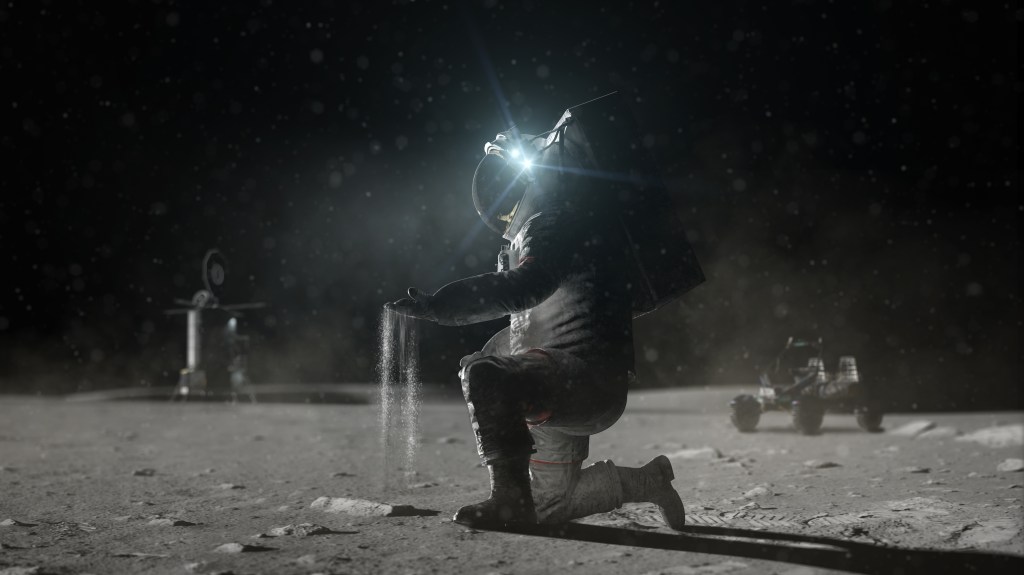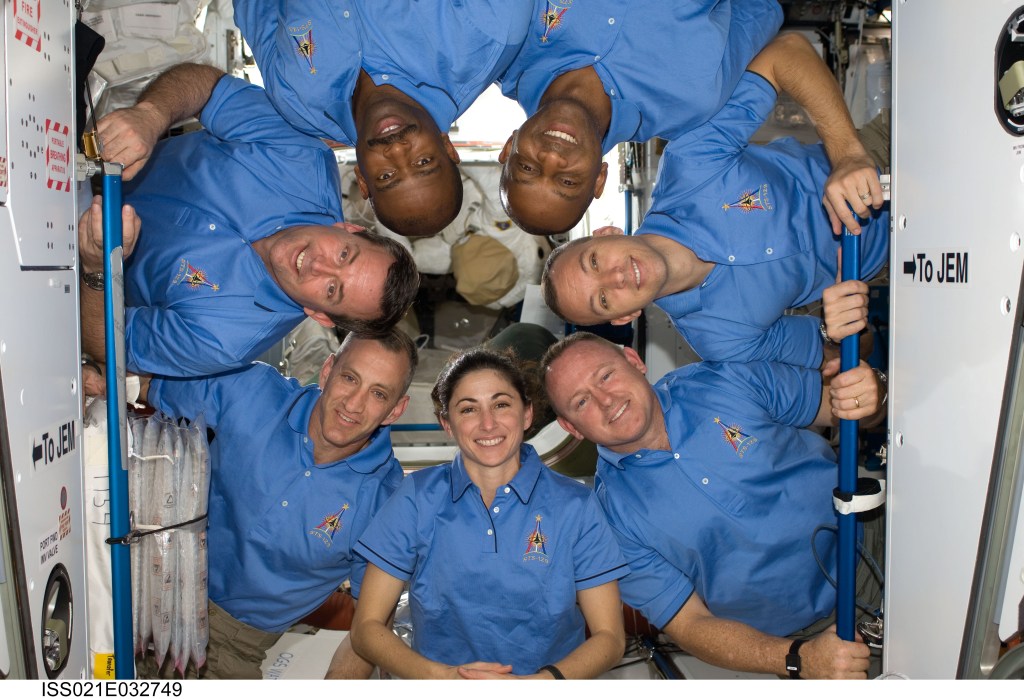
STS-87
The STS-87 mission launched aboard the Space Shuttle Columbia on November 19, 1997. The primary payload for the mission was the U.S. Microgravity Payload-4 (USMP-4).
Orbiter
mission duration
Launch
Landing

Mission Facts
Mission: USMP-4; Spartan 201-04
Space Shuttle: Columbia
Launch Pad: 39B
Launched: November 19, 1997, 2:46:00 p.m. EST
Landing Site: Kennedy Space Center, Florida
Landing: December 5, 1997, 7:20:04 a.m. EST
Runway: 33
Rollout Distance: 8,047 feet
Rollout Time: 57 seconds
Revolution: 252
Mission Duration: 15 days, 16 hours, 34 minutes, 4 seconds
Orbit Altitude: 150 nautical miles
Orbit Inclination: 28.45 degrees
Miles Traveled: 6.5 million
Crew
Kevin R. Kregel, Commander
Steven W. Lindsey, Pilot
Kalpana Chawla, Mission Specialist
Leonid K. Kadenyuk, Payload Specialist
Winston E. Scott, Mission Specialist
Vladimir Titov, Mission Specialist
Takao Doi, Mission Specialist
Launch Highlights
Eighth shuttle flight of 1997 – first time since 1992 eight flights were conducted in one year. Sixth on-time liftoff in ’97, and all eight flights launched on day set in Flight Readiness Review. First use of Pad 39B since January following completion of extensive modifications to pad structures.
Mission Highlights
Primary payload of the flight, the U.S. Microgravity Payload-4, performed well. Research using other major payload, SPARTAN-201-04 free-flyer, was not completed.
SPARTAN deploy delayed one day to Nov. 21 to allow time for companion spacecraft, the Solar and Heliospheric Observatory (SOHO) already on-orbit, to come back on-line. Chawla used orbiter’s mechanical arm to release SPARTAN at 4:04 p.m. Spacecraft failed to execute a pirouette maneuver several minutes later, suggesting there was a problem with the attitude control system for fine pointing toward solar targets. Chawla then regrappled the SPARTAN, but did not receive a firm capture indication. When she backed the arm away once more, a rotational spin of about two degrees per second was apparently imparted to the satellite. Kregel tried to match the satellite’s rotation by firing Columbia’s thrusters for a second grapple attempt, but this was called off by the flight director.
After a plan was formulated to retrieve the free-flyer, Scott and Doi began a seven-hour, 43-minute space walk Nov. 24 and captured the SPARTAN by hand at 9:09 p.m. EST. The two astronauts then completed a series of activities that continue preparations for on-orbit assembly of the International Space Station. Doi became the first Japanese citizen to walk in space.
USMP-4 research deemed to be highly successful. This fourth flight of the U.S. Microgravity Payload focused on materials science, combustion science and fundamental physics. Experiments included the Advanced Automated Directional Solidification Furnace (AADSF); Confined Helium Experiment (CHeX); Isothermal Dendritic Growth Experiment (IDGE); Materials for the Study of Interesting Phenomena of Solidification on Earth and in Orbit (MEPHISTO); Microgravity Glovebox Facility (MGBX), featuring several experiments: the Enclosed Laminar Flames (ELF), Wetting Characteristics of Immiscibles (WCI) and Particle Engulfment and Pushing by a Solid/Liquid Interface (PEP); Space Acceleration Measurement System (SAMS); and Orbital Acceleration Research Experiment (OARE). Highlights included fastest dedritic growth rate ever measured and highest level of supercooling ever obtained for pivalic acid, a transparent material used by researchers to model metals, in IDGE. With CHeX, the most precise temperature measurement ever made in space was achieved.
With MEPHISTO, researchers were able to separate for first time two separate processes of solidification. They were also able to measure the speed of smooth crystal growth. With AADSF, like MEPHISTO featuring a furnace, allowed growth of large, near-perfect crystals of various types of semiconductor materials, as well as an exceptionally uniform crystal of mercury-cadmium-telluride.
PEP experiment, conducted with the Glovebox facility, examined the solidification of liquid metal alloys. For first time, researchers observed large clusters of particles being pushed, forcing them to reassess theories for how alloys solidify. ELF, another Glovebox experiment, established first probability chart for flame stabilization in microgravity. This was mission’s only combustion experiment. It focused on laminar gas flows, a key phenomenon in the combustion process. Data gathered on-orbit should help refine computer simulations studying aircraft engine safety and furnace efficiency.
Other payloads: Get Away Special canister containing four experiments; the Collaborative Ukrainian Experiment (CUE), featuring a collection of 10 plant space biology experiments in the middeck; and several Hitchhiker payloads in the payload bay.
Orbiter performance was nominal throughout the mission.
STS-87
Shuttle News
Retired Space Shuttle Locations
Shuttle Atlantis – Kennedy Space Center Visitor Complex Shuttle Discovery – Steven F. Udvar-Hazy Center Shuttle Endeavour – California Science…
Read the Story












































